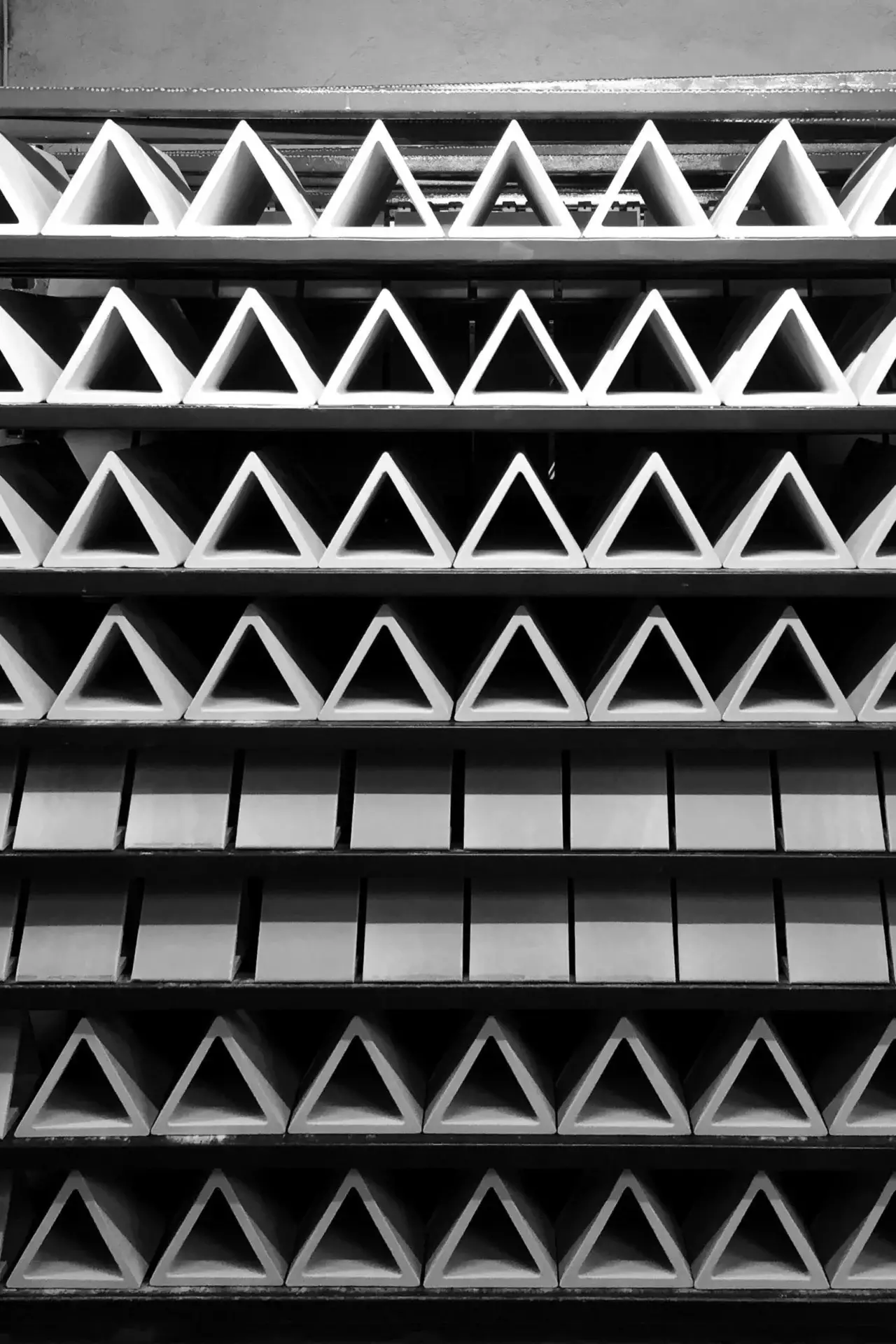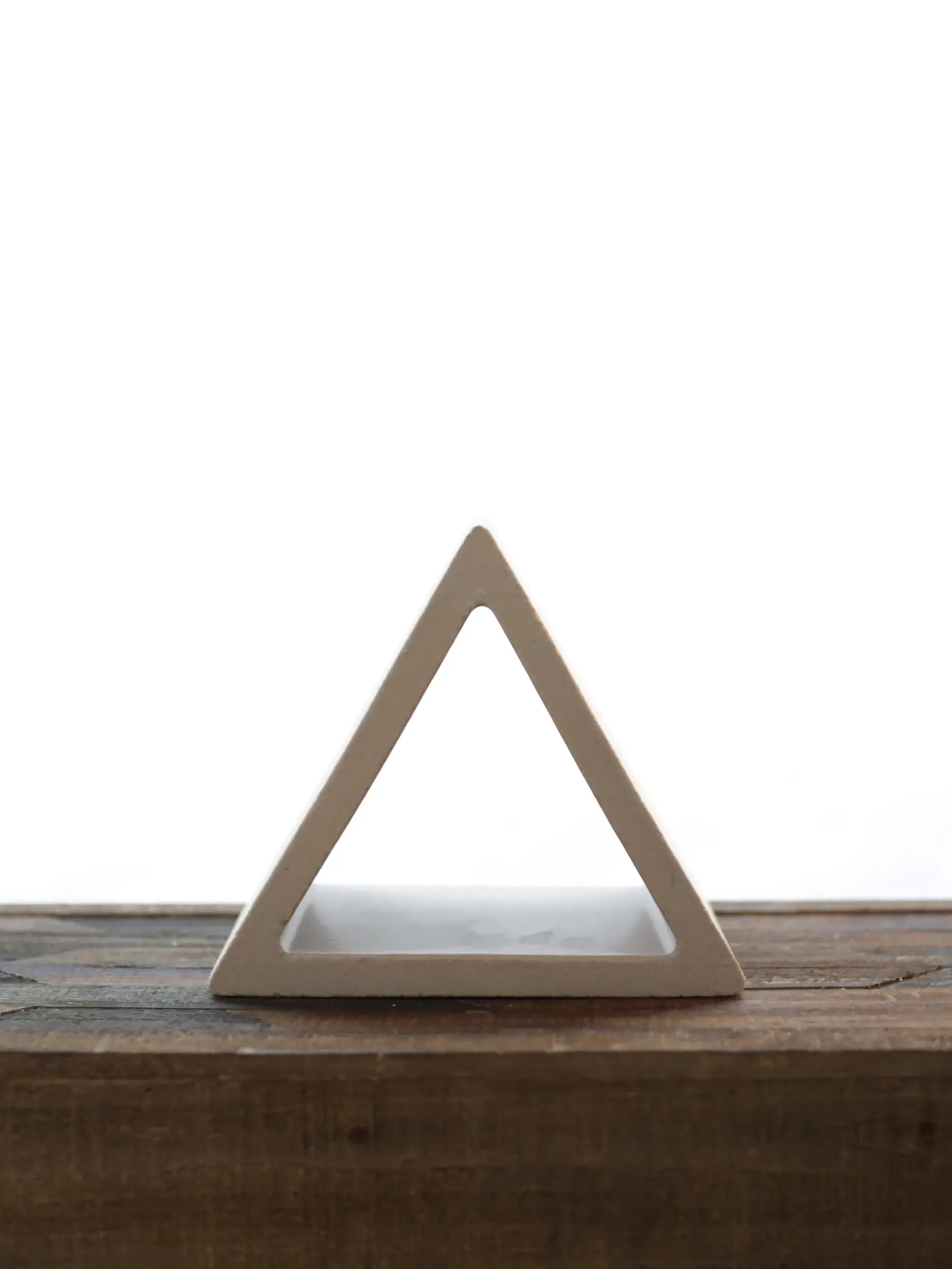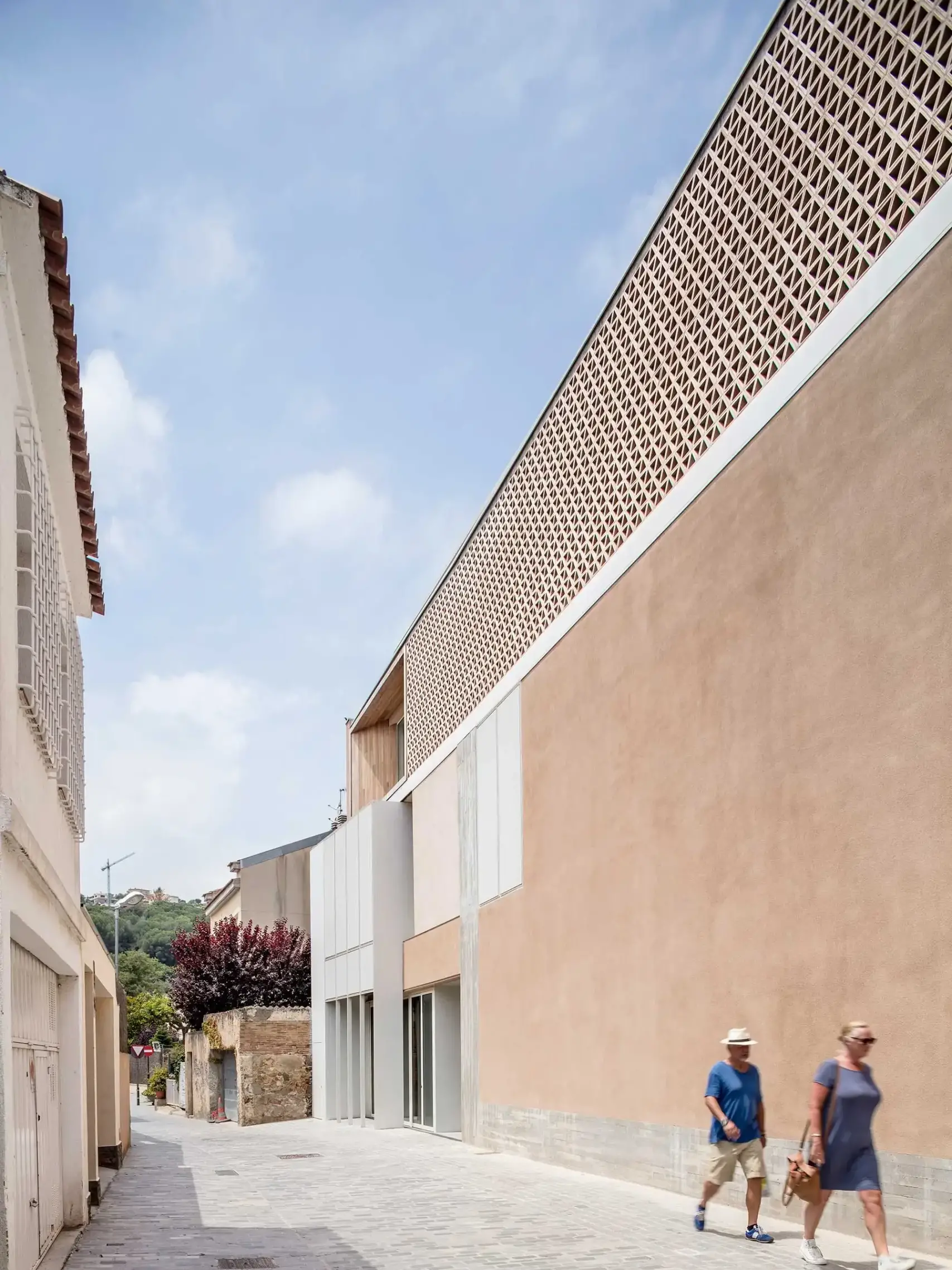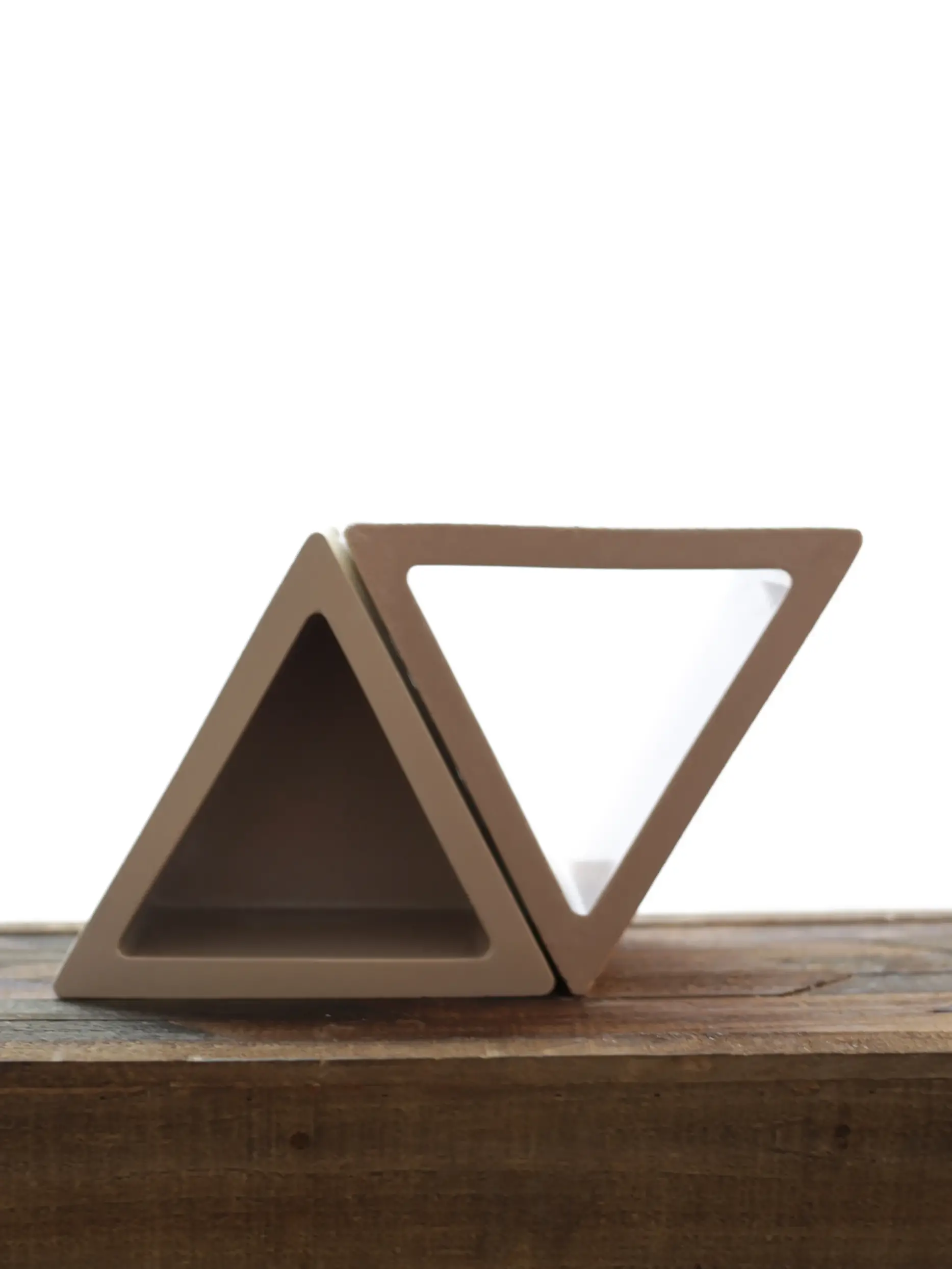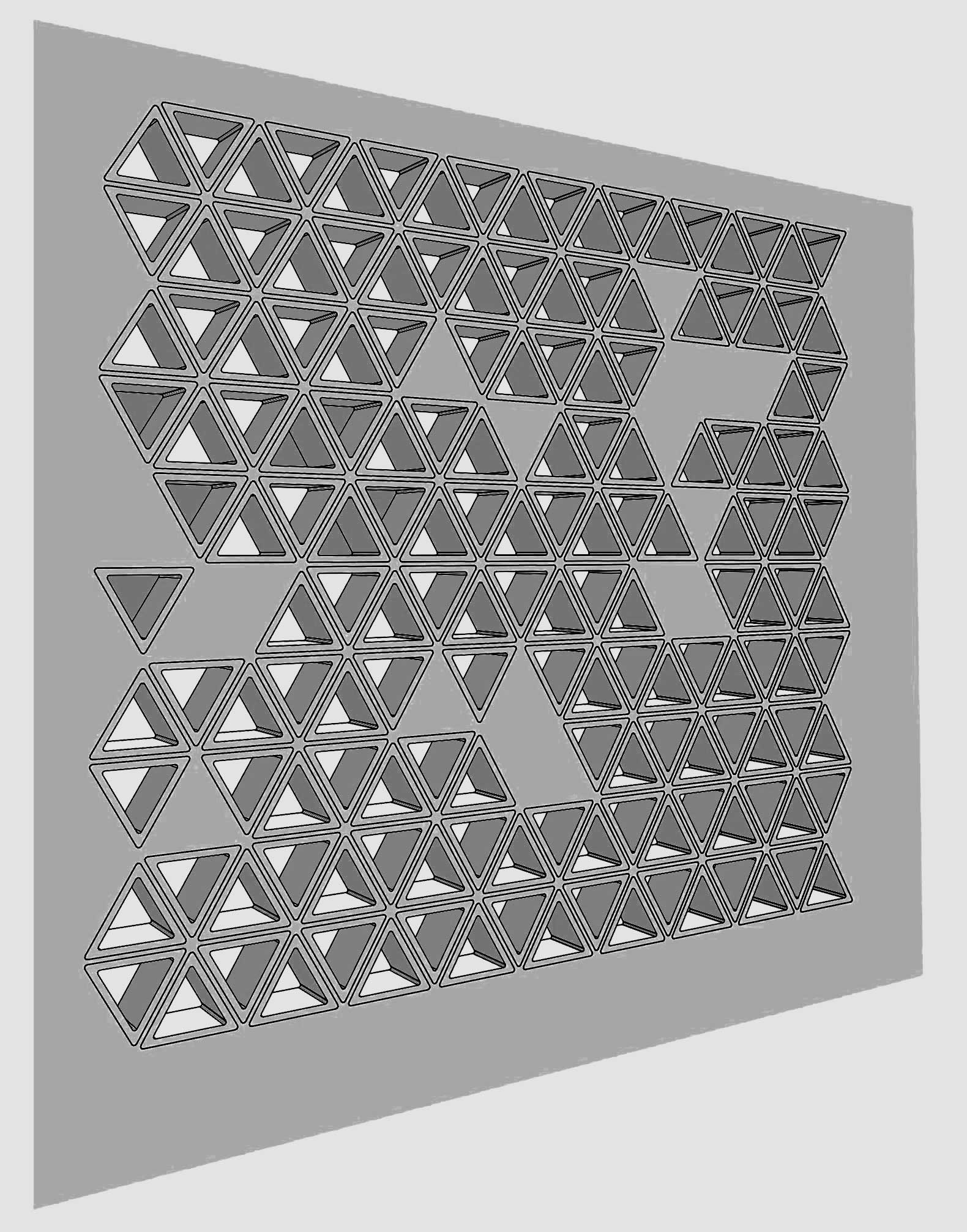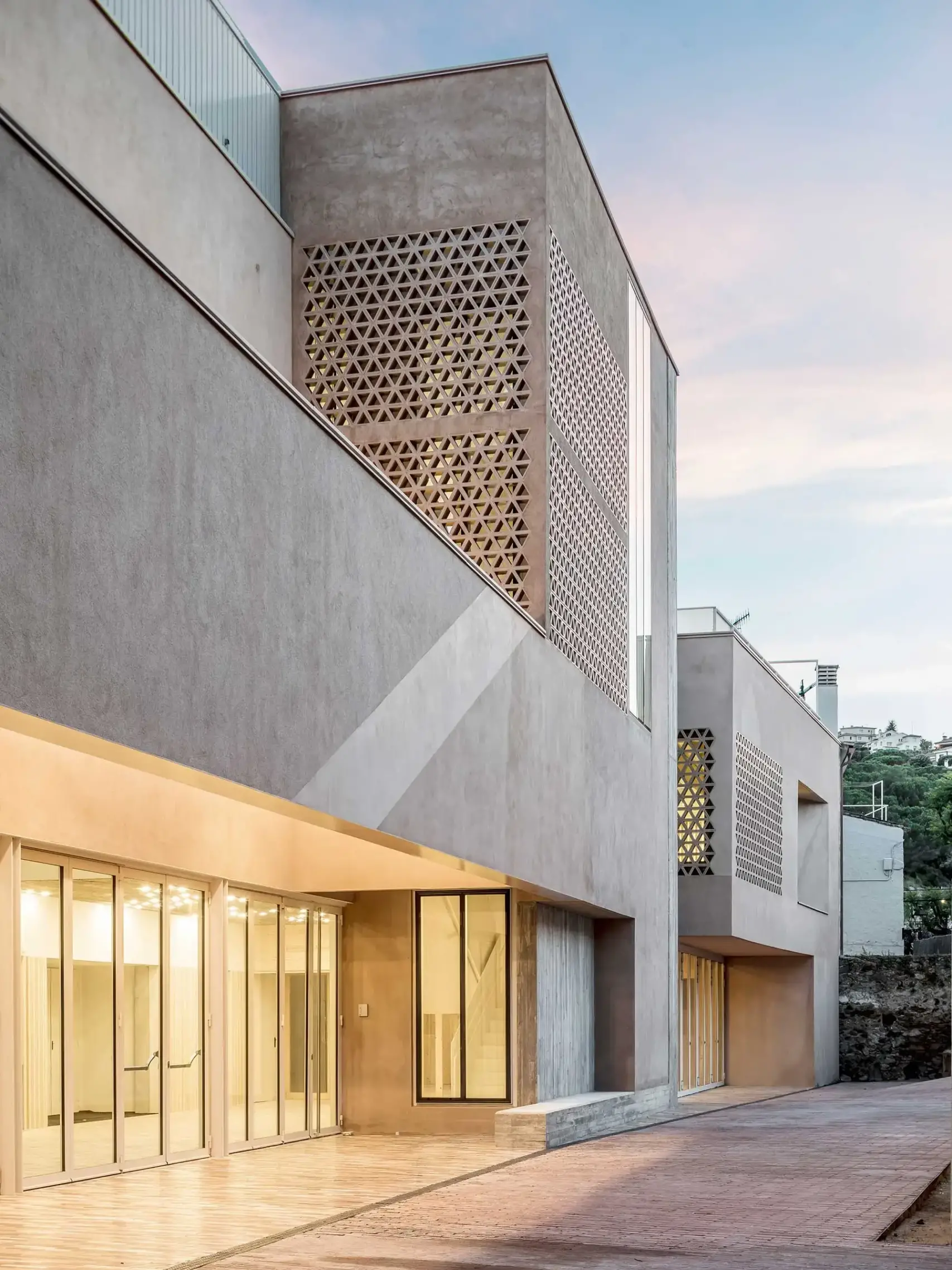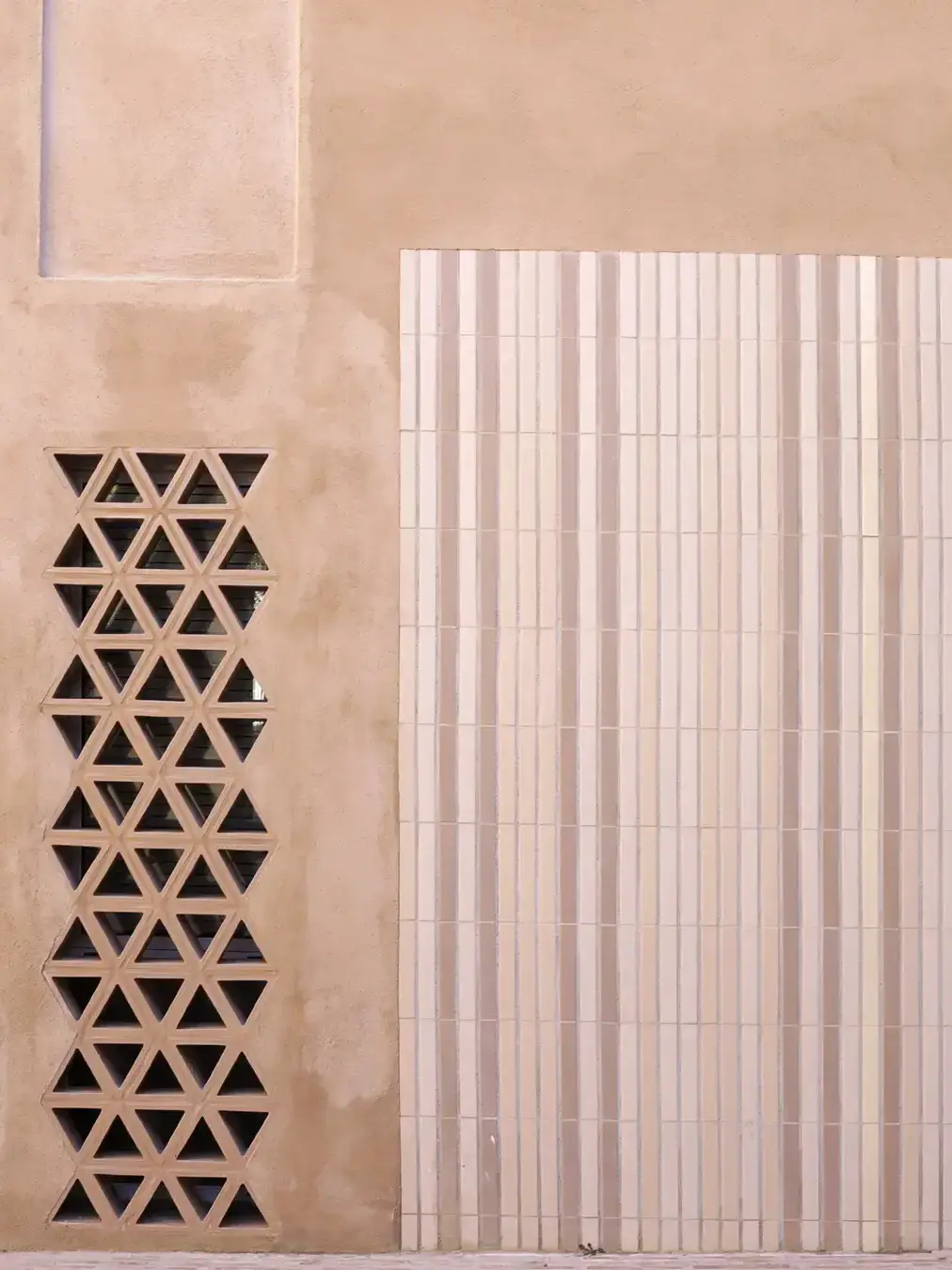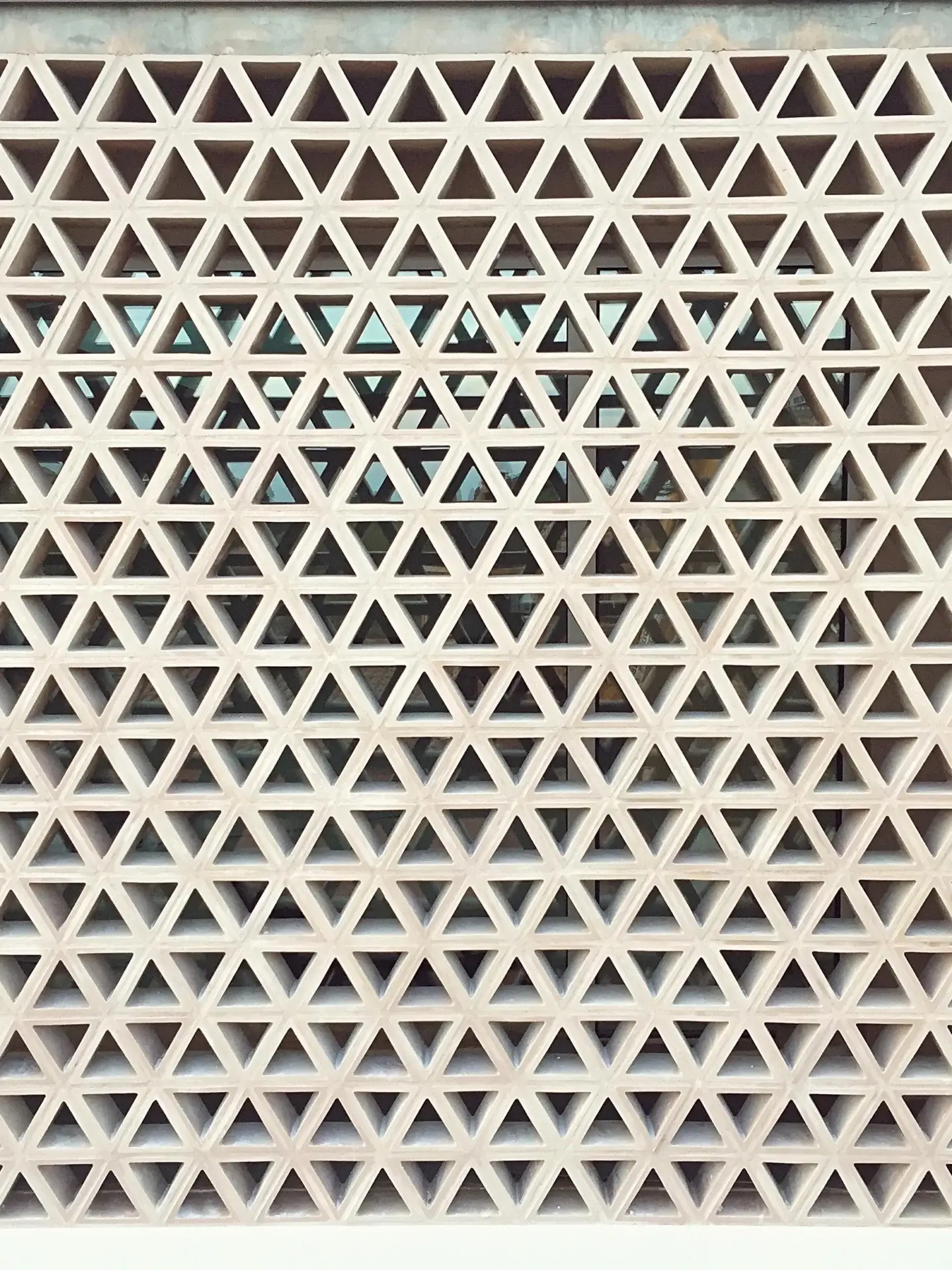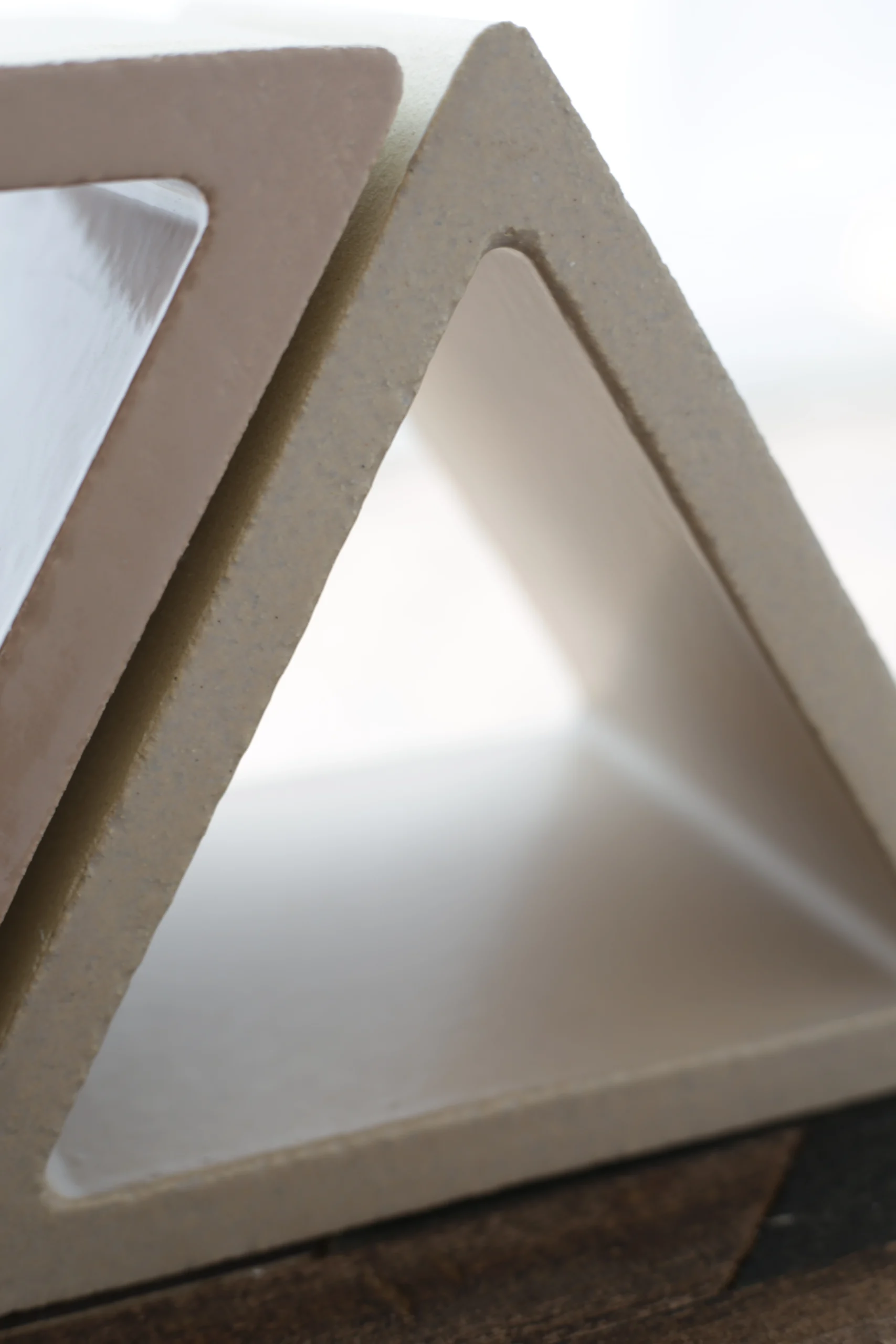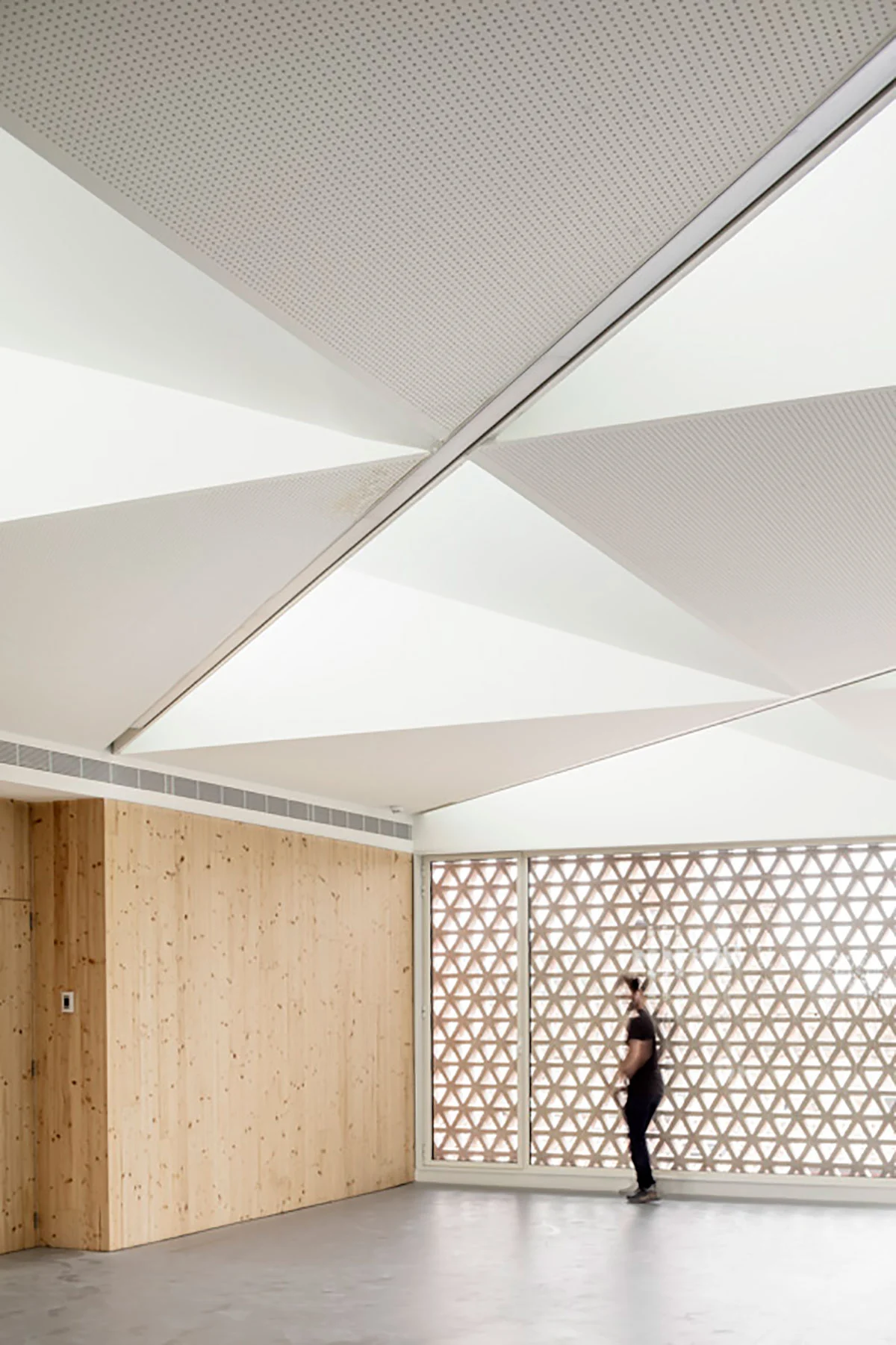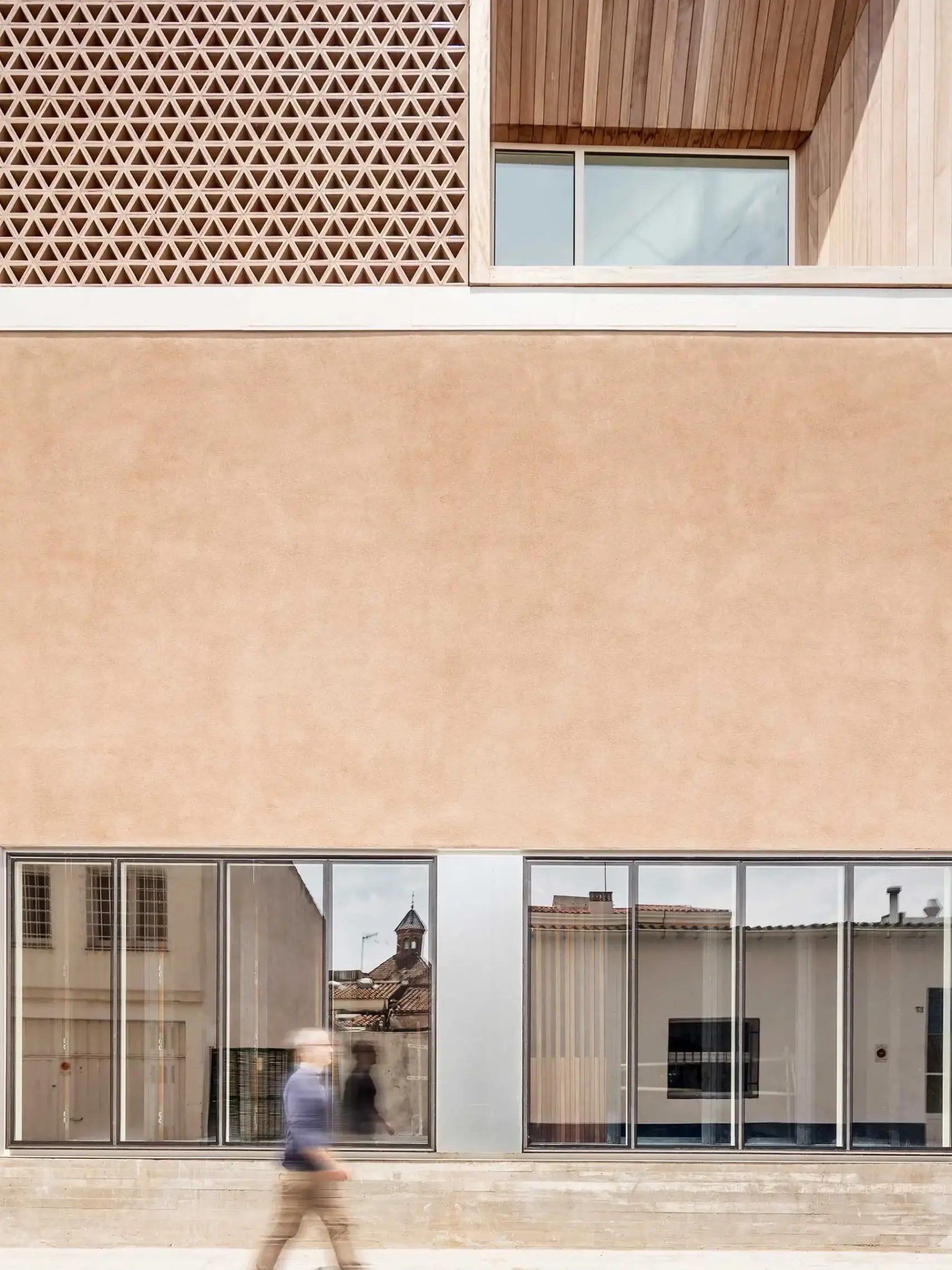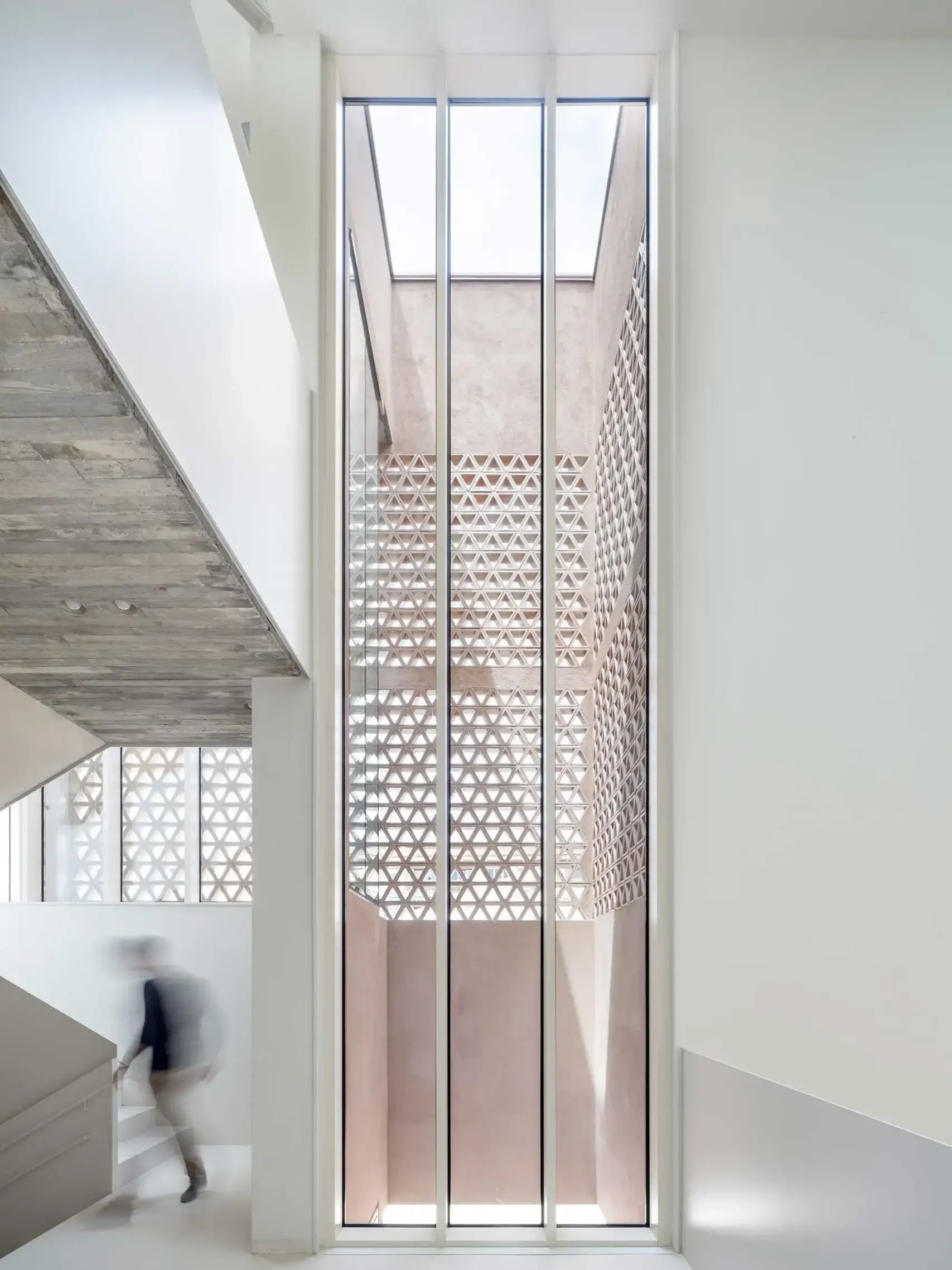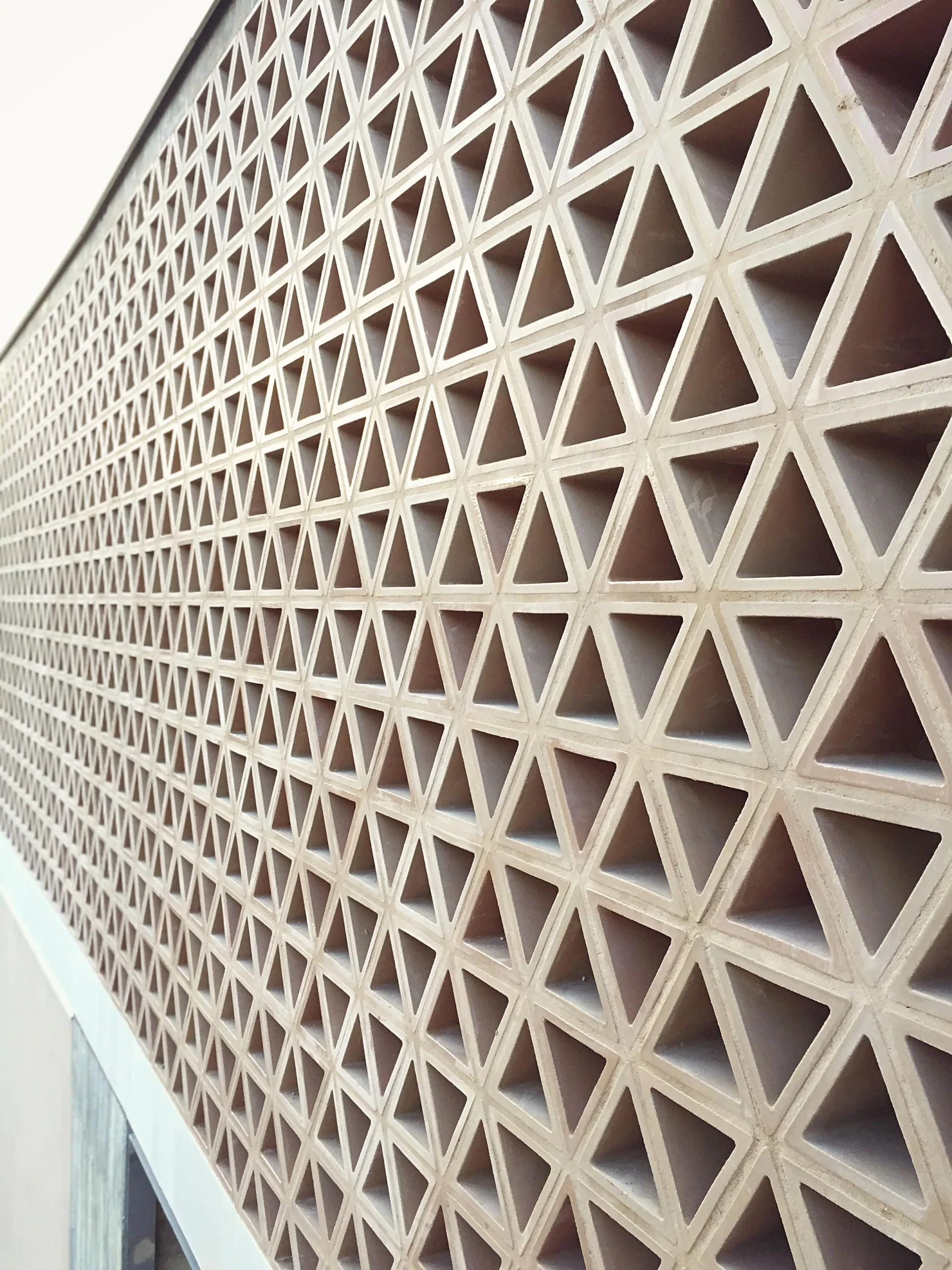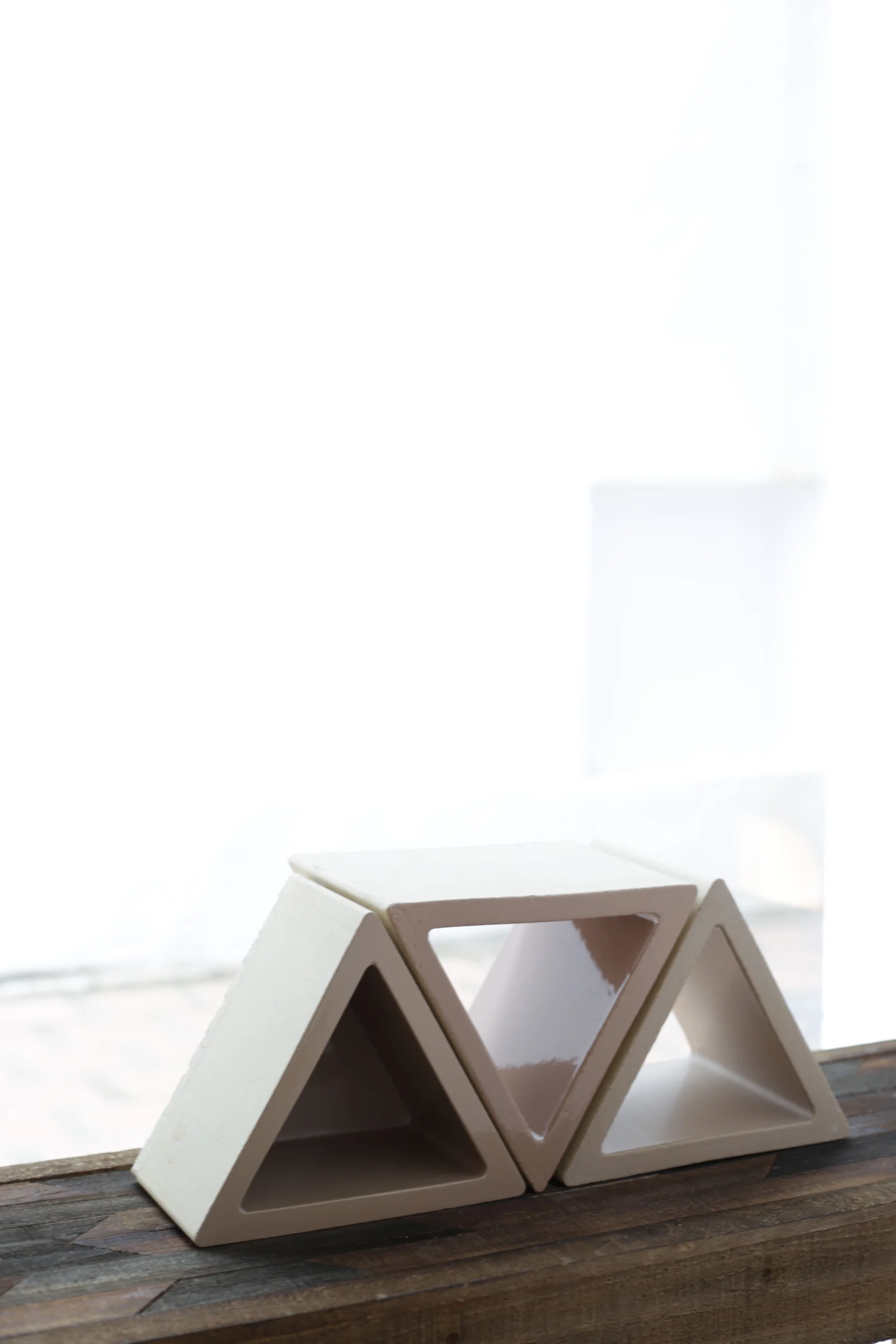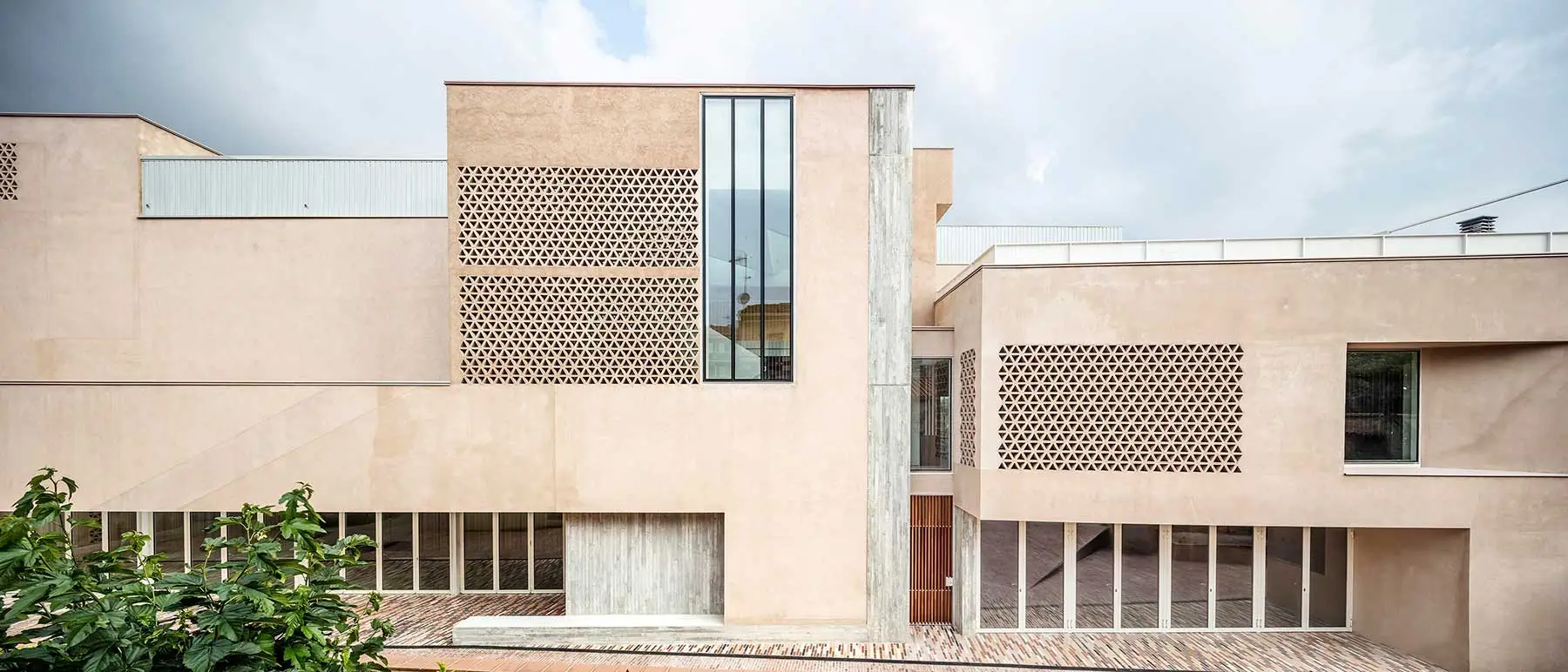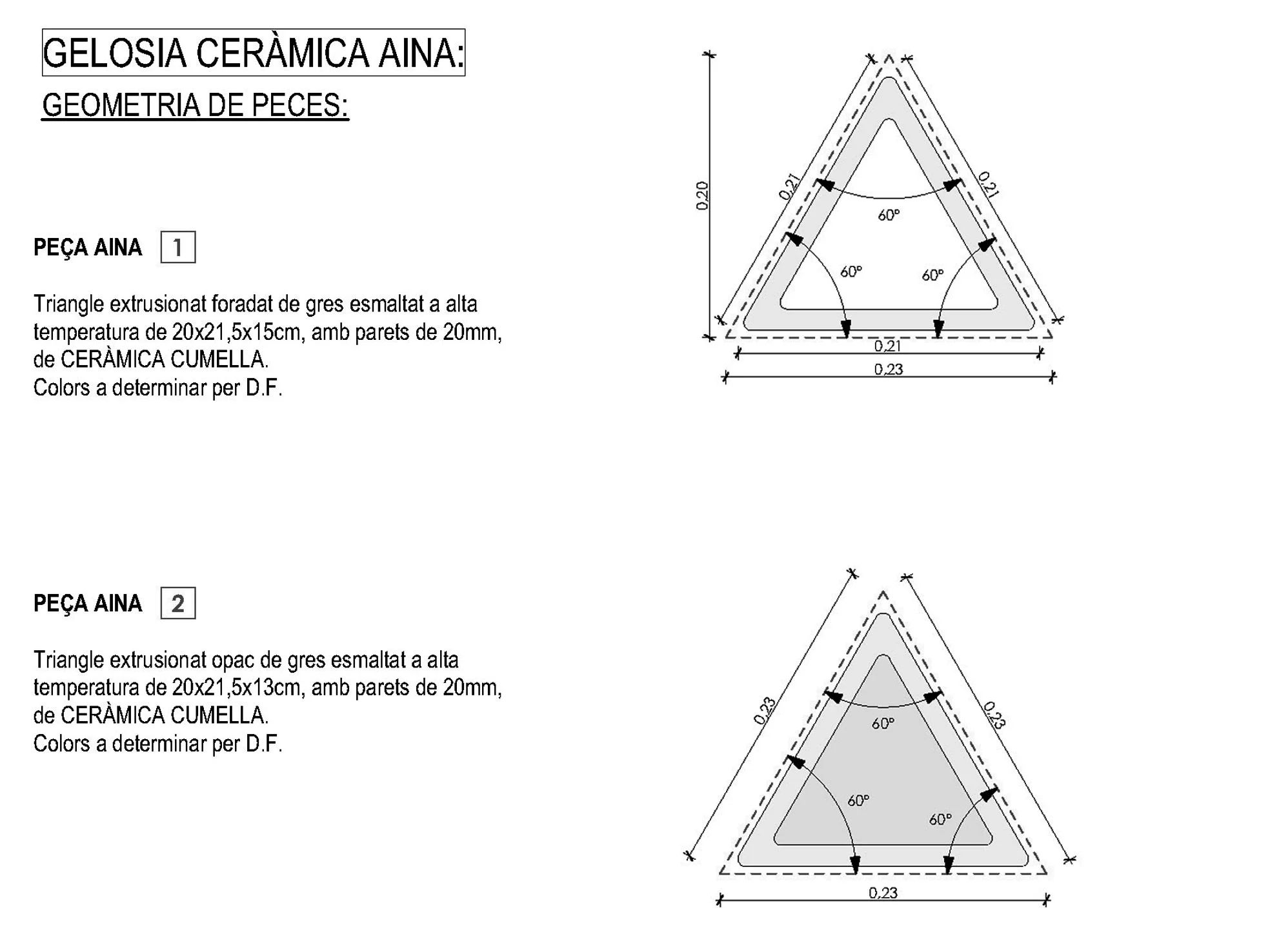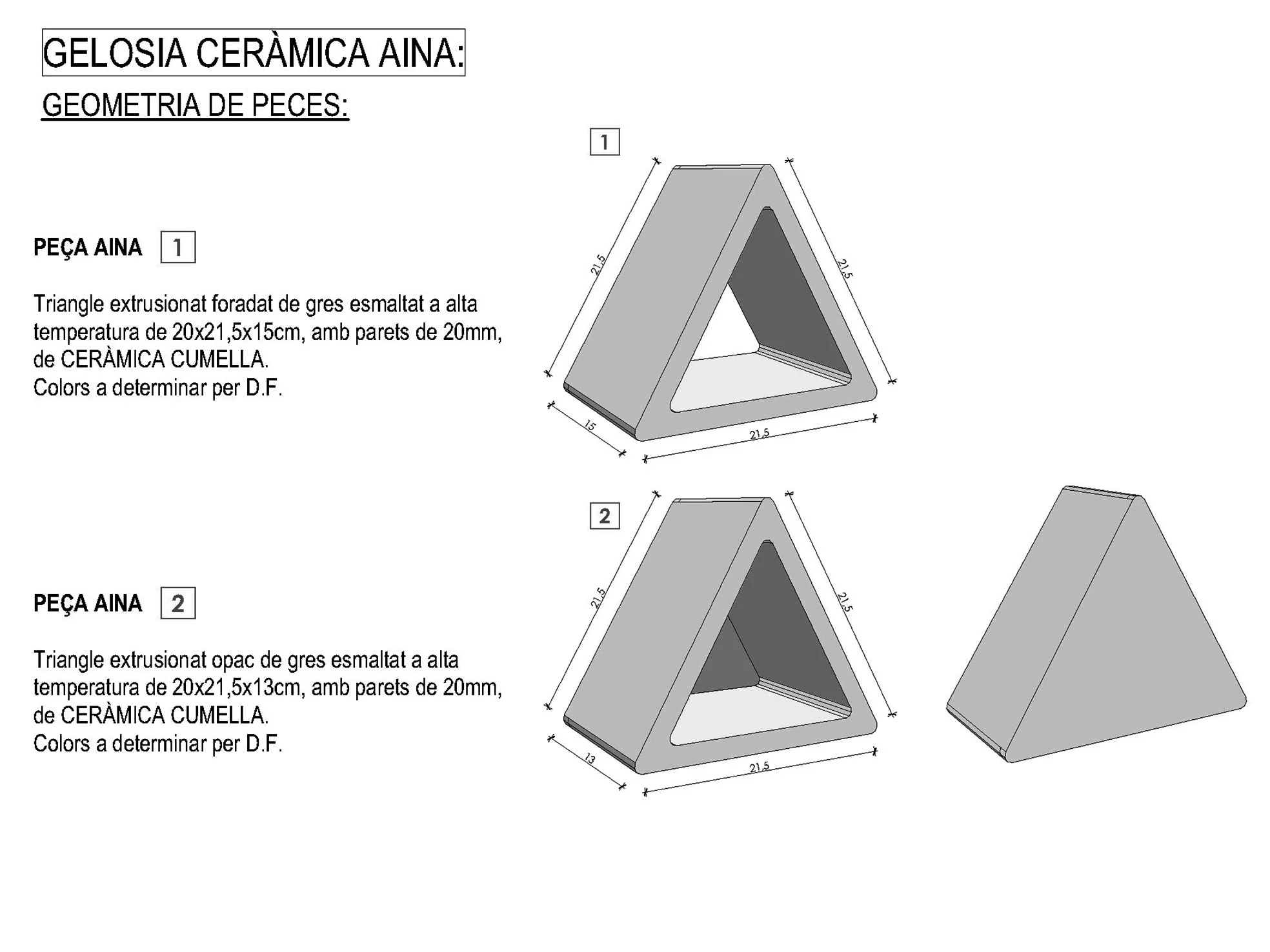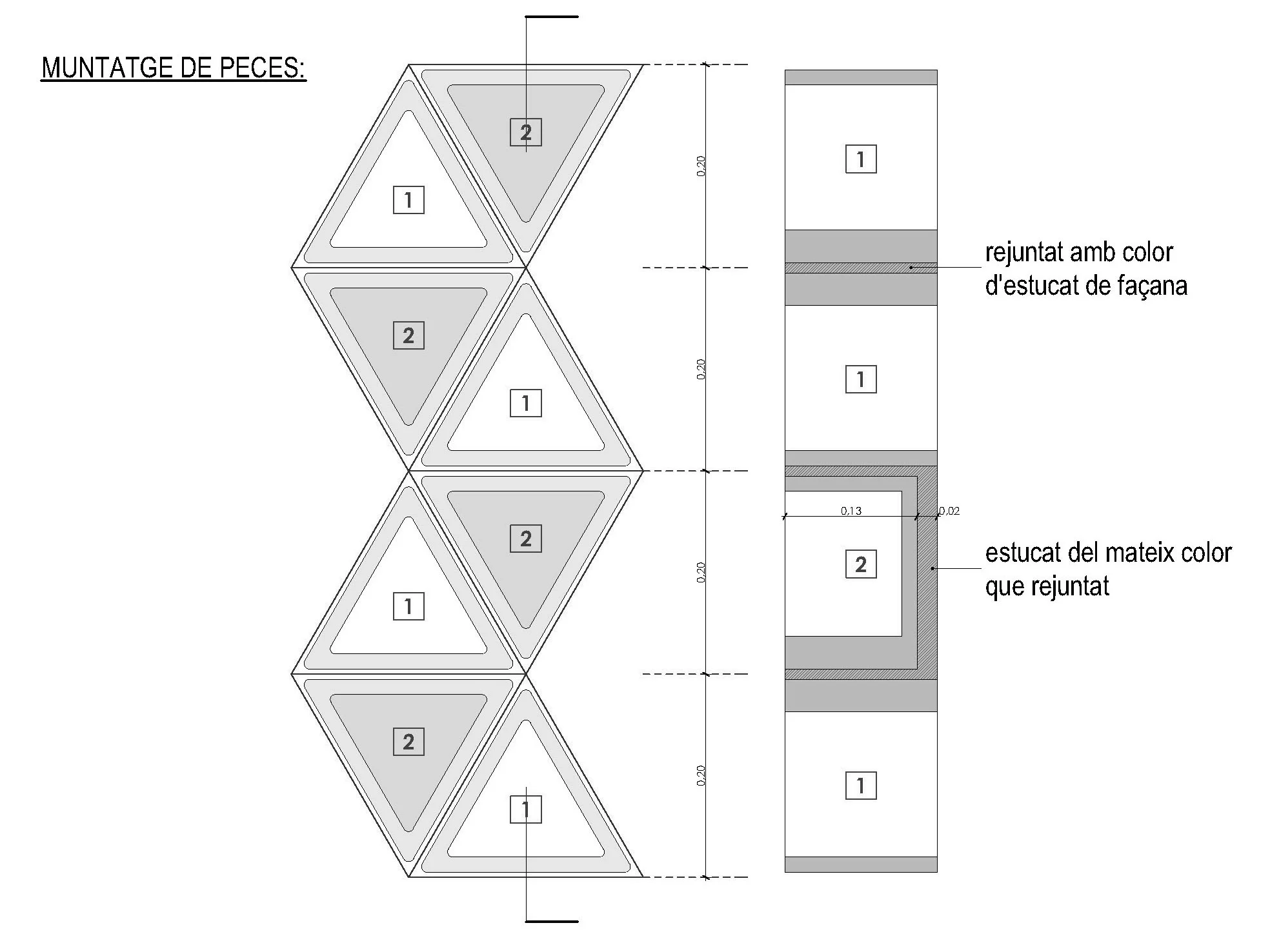Location
Badalona, Barcelona
Category
Design
Photography
Adrià Goula, FEM
Year
2015
In the compact and earthy-toned townscape of Alella, the new cultural building designed by FEM – winners of the architectural competition – required a façade element that could both protect and belong. From this search emerged Aina, a triangular ceramic lattice designed by FEM and masterfully crafted by Ceràmica Cumella. Conceived initially for the Alella Auditorium, Aina has since taken on a life of its own – not just as a functional component, but as a product of design that transforms façades into vibrant, porous surfaces of light and shadow.
Aina begins with a simple geometric truth: the triangle. From this essential form arises an entire system. Two complementary pieces – one solid, one perforated – allow endless combinations of opacity and transparency. The logic is rational, yet the outcome is poetic: façades animated by a rhythmic alternation of voids and solids, shifting with the sun, never fixed, never monotonous.
The craftsmanship of Ceràmica Cumella, renowned worldwide for its architectural ceramics, elevates this design into a material statement. Each Aina piece carries the memory of clay shaped by fire, refined through glazing that may be matte or glossy. The glossy elements catch daylight and scatter fleeting reflections, while the matte surfaces absorb light, giving depth and calm. In their interplay, façades acquire a living vibration – surfaces that are never flat, but constantly responding to the conditions of the day.
Before becoming a façade, Aina is geometry in its rawest state – clay, fire, and craft aligning in the hands of Cumella’s artisans.
Aina allows endless compositions by combining solid and perforated modules – a flexible system where opacity and transparency form unique patterns.
Light is where Aina reveals its soul. Through the perforated elements, sunlight passes gently, casting triangular shadows across interior walls and floors. These shadows move, lengthen, and dissolve as hours go by, turning architecture into a stage for geometry in motion. From the outside, the alternation of open and closed creates a textured depth, breaking down the scale of large volumes and blending them more harmoniously with their surroundings.
The triangular unit is inherently versatile. Its reversibility allows placement in both orientations, expanding the vocabulary of possible compositions. With just one module, architects and designers gain an infinite palette of patterns – each façade unique, each installation an exploration of rhythm and density. Aina is at once consistent and variable: a system bound by order, yet open to freedom.
Material thickness has been finely tuned. The perforated piece is thinner, so that the façade line remains continuous while the interior surface reveals a soft concavity. This dual reading enriches the spatial experience – outside, continuity; inside, a tactile relief. The element is simultaneously skin and depth, protection and ornament.
Color adds yet another dimension. Aina can be glazed in earthy hues that blend with traditional masonry, or in bold tones that accentuate its geometry. When combined with matte and glossy finishes, the façade gains a subtle play of textures and reflections. Each project can adapt the lattice to its own palette, while retaining the essential triangular identity.
This adaptability reflects the philosophy behind its creation by FEM: that architecture must be precise yet responsive, grounded yet open to dialogue with its context. With Aina, large civic structures such as the Alella Auditorium could soften their scale, integrating into the intimate fabric of the town. But beyond that specific project, the lattice is conceived as a universal tool – one that can articulate courtyards, shade terraces, or enliven entire city blocks.
Collaboration with Ceràmica Cumella was fundamental in this transformation from concept to object. Known internationally for bridging craft tradition and contemporary architecture, Cumella brought technical mastery and material sensitivity to the piece. Their expertise ensured that Aina is not only a geometric idea, but a durable, precise, and versatile ceramic product, ready for a wide range of applications. It is a dialogue between design and making, between the studio and the workshop, between FEM’s architectural vision and Cumella’s artisanal excellence.
In the dance halls of the auditorium, Aina shields from the afternoon sun – a porous veil that feels transparent from within and protective from the outside.
Two pieces, one solid and one perforated, define the system: from this essential triangular form, façades of rhythm and porosity emerge. Matte and glossy finishes enrich the surface, capturing light in shifting reflections that transform with the passing day.
Aina is therefore more than a lattice. It is a mediator between architecture and place, between light and shade, between the monumental and the domestic. It recalls ancient Mediterranean traditions of porous façades and latticed walls, while embodying contemporary precision and modularity. It is a product that bridges opposites: solidity and openness, protection and permeability, tradition and innovation.
Aina demonstrates how a small element can have a profound impact. A single ceramic piece, repeated and combined, can change the way a building is perceived, the way it feels, the way it belongs to its context. Through geometry, materiality, and craft, Aina gives façades a new voice – one that listens, adapts, and resonates with its surroundings.
“With Aina we explored how the smallest module, when crafted with precision, can transform the perception of an entire building.
